ROADSIDE REVEGETATION
An Integrated Approach to Establishing Native Plants and Pollinator Habitat
1.5 Approach
The establishment of native plant communities, in order to re-initiate natural processes of succession is a cornerstone of most ecological restoration work (Dorner 2002) (Figure 1-4). Effective revegetation on highly disturbed roadsides aims to initiate or accelerate processes of natural succession following disturbances. Three aspects are generally considered: (1) health (the functional processes of the ecosystem); (2) integrity (species composition and community structure); and (3) sustainability (resistance to disturbance and resilience) (Clewell and others 2005). While restoring plant communities to a pre-disturbance state is not typically a goal on highly disturbed roadsides, each of the above three ecosystem aspects can be improved with appropriate roadside revegetation practices. The establishment of reference sites, or natural models for the desired recovery process, is key to identifying and overcoming limiting factors and accelerating succession by establishing native plants.
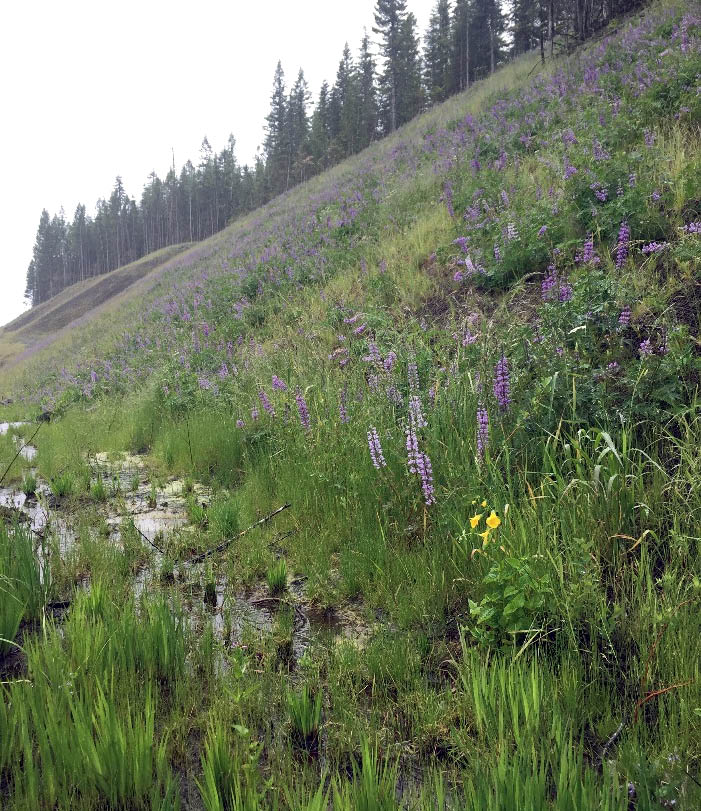
Figure 1-4 | Roadside native plant community
The establishment of native plant communities is the cornerstone of ecological restoration.
Photo credits: Lynda Moore, USFS
Native species play an important role in ecosystem development. If native species can become established on a disturbed site, the processes of succession, including soil recovery and nutrient cycling, are initiated (Brown and Amacher 1999). In most cases, native plants are established on roadsides through seeding or planting, although sometimes passive revegetation (natural colonization) is possible where native seed banks are nearby and limiting factors are mitigated.
1.5.1 Sustainable Revegetation on Roadsides
Sustainable revegetation projects attempt to integrate disturbed sites with the surrounding, non-disturbed landscape. An ideal integration is both visual and functional in nature, and the blending of the two is often considered an art.
Revegetation efforts are most likely to be sustainable if they are process-based in approach, rather than form-based. Process-based projects aim to create healthy and resilient ecosystems with the necessary components to develop multiple natural processes. Many desired natural processes take hundreds of years to fully develop, so it is unreasonable to think a designer can anticipate, replicate, and accelerate their development over the course of a project that might span three, five, or ten years. The objective, rather, is to install as many components of as many processes as possible, to facilitate their development. In this sense the designer is often most interested in the trajectory of the developing processes, rather than their presence in complete form.
The purpose of this section is not to discuss every possible contributor to resiliency or process building. Rather, it is to provide the designer with information that might assist in the recognition of actions they can take to potentially increase resiliency and accelerate the development of natural processes.
Encouraging Resiliency
Resiliency is a system's ability to recover quickly, and hopefully entirely, from disturbance. The use of genetically appropriate plants, collected from throughout the project and surrounding area within the provisional seed zone(s), can encourage genetic health and resilience of the restoration plant population as well as those populations surrounding the project area. Restoration plants, installed at sufficient spacing, can increase competition and facilitate the site's resistance to invasion by non-native or weedy plant species, thereby making it more resilient to plant compositional changes when they do occur. Plant species and form diversity creates redundancies in life form, functional grouping, and services; all of which increase resiliency.
Consideration of Natural Processes
Multiple natural processes have components for which the designer can assist when re-integrating a disturbed site into the surrounding landscape. The designer may want to identify and initiate the enhancement or construction of those processes that already naturally occur, or would be expected to occur, on the surrounding landscape. There would be little point in allocating resources to try to develop a wetland in a sage steppe of a high desert upon which no wetlands occur, for example.
Soil forming processes can be considered during a number of project activities such as decommissioning roads, constructing cut and fill slopes, or when shaping the final grade of spoils areas. Knowing that wind and water erosional forces shape and sculpt land formations, attention to the contours of the surrounding landscape can inform designers and equipment operators of how best to blend the target area with its environment. By doing so the newly formed contours not only visually re-integrate the project site into the surrounding setting, but also prevents out-of-proportion, angular, or inappropriate landforms from interrupting wind and water patterns. In addition, the accumulation of plant detritus is a basic component of soil formation. It is often useful to de-compact the soil and leave the site in a roughened, irregular, and undulating condition. The resulting hummocks and low spots can seem small and inconsequential, but they provide pockets for soil to accumulate and will eventually support plant life. Avoiding compaction of the soils frequently provides for better water infiltration and drainage, reduced erosion, and overall stability of soil particles.
The use of annual and perennial plants in revegetation projects contributes plant litter to the system throughout a prolonged period of time compared to a site that only uses one or the other. This litter then becomes reduced and incorporated into disturbed sites, facilitating the nutrient cycling. Including various plant life forms in a revegetation plan, including shrubs and trees where appropriate, provides refuge, breeding-, feeding-, rearing-grounds, as well as domicile habitat for insects, birds, and various small and large animals. The abundance and diversity of organisms supported on the revegetation site contribute greatly to the development of a functioning nutrient cycle. In addition to facilitating nutrient cycling, the abundance and diversity of organisms supported also play critical roles in the dispersal of seeds and spores.
Consider Maintenance Operations and Costs
Sustainability from the maintenance stand point is a component that is easy to overlook, when focused on the biology of a project. Roadside maintenance programs are designed to insure the safety of travelers and to protect the integrity of the road. If the life forms planted are inappropriate for the roadside, if setbacks or roadside zones are ignored, if the structural integrity of the selected plants is not sound, or if the restoration plantings create visibility and safety issues, then the revegetation project will not be sustainable. Maintenance operations and costs are components to be considered in all phases of a revegetation project as its success and sustainability is partially dependent on understanding the needs of roadside maintenance programs.
1.5.2 What is the "Roadside"?
In this report, the term "roadside" refers to any area of disturbance associated with road construction, reconstruction, waste areas, source pits, and maintenance, (Figure 1-5). The roadside includes the sides of the road corridor beyond the paved road (shoulders and verges), including impacted or maintained roadside areas within the right-of- way. The roadside area is sometimes narrow, but sometimes extends several hundred feet or more beyond the edge of the road surface, depending on the project. In some situations, revegetation efforts may encompass areas beyond the right-of-way that are affected by or affect the road. The area where the revegetation specialists will focus their efforts is usually dependent on two factors: ownership of the right-of-way and surrounding lands, and areas of disturbance (construction footprint). Most roadsides are drastically disturbed environments, where soil may be severely compacted and consist of a mixture of subsoil and parent material (Figure 1-6). Beneficial microorganisms, nutrients, and organic matter necessary to sustain plant growth may be absent or severely depleted. Often, slopes can be very steep and inaccessible, exposed to the erosive effects of wind and water. These environments represent a revegetation challenge of high intensity and magnitude.
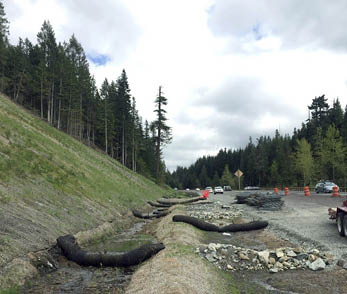
Figure 1-5 | Roadsides are disturbed areas
"Roadside" refers to disturbed areas resulting from road construction, modification, or improper maintenance.
Photo credits: Lynda Moore, USFS
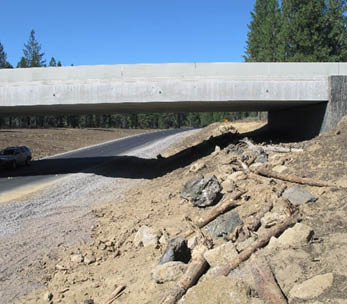
Figure 1-6 | Roadsides can be highly disturbed
Roadsides are often drastically disturbed and infertile environments with no topsoil, severe compaction, and a lack of beneficial microorganisms.
Photo credit: Matt Horning, USFS
1.5.3 What are Native Plants?
"Native plants," as defined in this report, are locally adapted, genetically appropriate native plant materials (Withrow-Robinson and Johnson 2006). These plants are best suited evolutionarily to the local conditions, and generally require less maintenance and persist longer than non-local species. When properly established, they form plant communities with the potential to be self-sustaining and self-perpetuating over time, requiring little or no input from humans to persist. Native plants also support more robust communities of pollinators, birds, and other small wildlife.
Inset 1-1 | Recent Policies Mandating Native Plants for Revegetation
Many land management agencies have policies mandating the use of native plants as the first choice in revegetation efforts. For example, the USDA Forest Service has the following policies in placer applicable to road projects on Forest Service lands:
- National Native Plant Materials Policy: "Native plant materials are the first choice in revegetation..." (USFS 2005)
- BAER Manual (FSM 2523): "...when practical, use genetically local sources of native species..." (USFS 2003)
- National Fire Plan Strategy: "...promote the establishment of local sources of native seed and other plant material..." (USFS/USDI 2001)
- R6 Revegetation Policy: "...use local native plants to the extent practicable..." (USFS 2004)
- NW Forest Plan; Interior Columbia Basin Ecosystem Management Project: "...maintain and restore native species and ecosystems..." (USFS/USDI 1994; USFS 2006)
- Federal Register Notices: "... promote the use of native plant materials in revegetation for restoration and rehabilitation...native plant materials are the first choice in revegetation for restoration and rehabilitation efforts." (FRN 2006)
- National Strategy to Promote the Health of Honey Bees and Other Pollinators: "...establish a reserve of native seed mixes, including pollinator-friendly plants..." (Pollinator Health Taskforce 2015)
- National Seed Strategy for Rehabilitation and Restoration: "...ensure the availability of genetically appropriate seed..." (BLM/WO/GI 2015)
Challenges to establishing native plants on roadsides are significant, partially due to difficulties in obtaining appropriate materials. However, the technological capacity of native plant propagation and outplanting efforts in both private and public sectors has increased significantly in the past two decades. Innovative stocktypes and application methods have made roadside revegetation more effective. Recent policy mandates from many federal agencies that manage roads now require the use of native plant materials as the first choice in revegetation efforts, thereby making roadside revegetation an important and expanding frontier for native plant suppliers.
1.5.4 Why the Emphasis on Pollinators?
An estimated 85 percent of the world's flowering plants depend on animals for pollination (Ollerton and others 2011). Animal pollinators visit flowering plants seeking floral resources and, in the process, incidentally transfer pollen from anthers (male reproductive structures of the flower) to stigmas (female reproductive structures), vectoring fertilization and allowing these flowering plants to reproduce. Pollinators rely on flowering plants for food, requiring nectar (a sugar-rich liquid) and sometimes pollen itself (a source of protein) as sources of energy and nutrition. Most animal pollinators are insects, such as honey bees, bumble bees, flies, and butterflies. However, vertebrates such as birds (e.g., hummingbirds), mammals (e.g., bats, rodents) and some reptiles pollinate certain plant species. The pollination services provided by pollinators are essential to the health and persistence of the plant species that depend on them, and for the wildlife and pollinators that in turn depends upon the plants for food, nesting, and shelter.
Pollinators are also important to human health and the global economy. More than 75 percent of the world's 115 principal cultivated crops are reliant on animal pollinators or benefit from animal pollination. Roughly 35 percent of global crop production is dependent on pollination by animals (Klein and others 2007). Insect-pollinated forage plants such as alfalfa and clover also provide feed for livestock. Pollinator-dependent food crops, namely fruits, vegetables, and nuts, make up a critical component of our diet (McGregor 1976). The majority of minerals, vitamins, and nutrients needed to maintain human health (such as vitamin C, lycopene, calcium, and folic acid) come from crop plants that depend partially or fully on animal pollinators (Eilers and others 2011). Consequently, pollinators provide essential agricultural services with a high economic value. A recent worldwide estimate suggests pollinators in general contribute 9.5 percent ($216 billion per year) to crop value (Gallai and others 2009). In the United States it is estimated that pollinators (both managed and wild) contribute $29 million in farm income annually (Calderone 2012). Importantly, native pollinators specifically have been shown to contribute approximately $1 billion to the California crop economy (Chaplin-Kramer and others 2011).
Globally, pollinators are in decline (National Research Council 2007; Potts et al. 2010). In the United States, wild pollinators such as monarch butterflies and many bumble bee species, as well as colonies of managed honey bees, are experiencing declines due to a loss of habitat, the spread of disease, overuse of pesticides, and various other factors (National Research Council 2007; Hatfield and others 2015; Jepsen and others 2015). Pollinator declines threaten the viability of agricultural productivity and the health of natural ecosystems.
With at least 17 million acres of roadsides in the United States, roadside vegetation can serve as much needed habitat for pollinators, offering food, breeding, or nesting opportunities and connectivity that can aid pollinator dispersal (Hopwood and others 2015). Roadsides can support a diversity of generalist pollinators, including bumble bees, honey bees, butterflies, and hummingbirds as well as rare or federally listed species. Roadsides sustain plants that are sources of pollen and nectar for adult pollinators as well as host plants for the caterpillars of butterflies and moths. The availability of floral resources influences the abundance and diversity of butterflies and bees found on roadsides (Saarinen and others 2005; Hopwood 2008). Pollinators on roadsides benefit in particular from native plants (Ries and others 2001; Hopwood 2008). Roadsides planted with native plants also can provide pollinators with shelter, sites for nesting or egg-laying, and overwintering habitat. Pollinators have complex life cycles, with different needs at different stages of their lives. Roadsides can provide resources for a portion of the life cycle of some species, while providing resources needed for the entire life cycle of other species.
Evidence also suggests that the linear shape and connectivity of roadsides may help pollinators to move through landscapes in search of food or in pursuit of new habitat (Ries and others 2001; Dirid and Cryan 1991). Roadsides extend through all landscapes and can be particularly important sources of habitat for pollinators in highly altered landscapes such as intensely managed agricultural lands (Figure 1-7).
Evidence also suggests that the linear shape and connectivity of roadsides may help pollinators to move through landscapes in search of food or in pursuit of new habitat (Ries and others 2001; Dirid and Cryan 1991). Roadsides extend through all landscapes and can be particularly important sources of habitat for pollinators in highly altered landscapes such as intensely managed agricultural lands (Figure 1-7).
Figure 1-7 | Vegetated linear corridors as habitat for pollinators and other wildlife
Linear corridors such as irrigation canals (A), utility rights-of-way (B), roadways (C), and river ways and riparian areas (D), present opportunities to reconnect fragmented pollinator habitats.
Photo credits: (A) Chris Jensen, USFS; (B) Justin Moffett, BPA; (C) Lynda Moore, USFS; (D) Lynda Moore, USFS
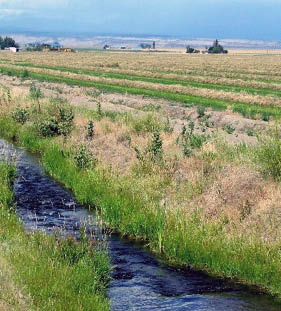
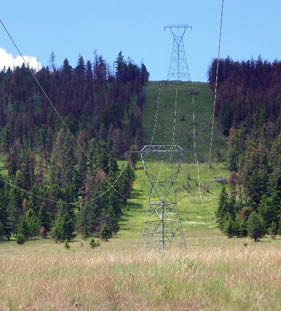
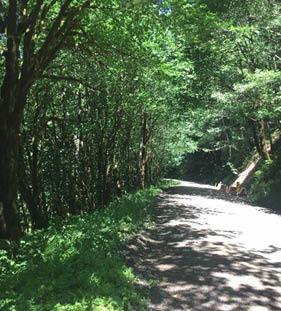
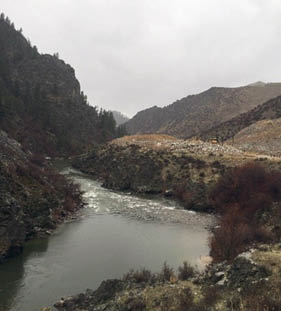
Not all roadsides are equally beneficial to pollinators. Roadsides that are intensively mown, blanket-sprayed with herbicides, or planted with introduced grasses support far fewer species of pollinators and smaller population densities than roadsides managed for native plants (Smallidge and Leopold 1997; Johst and others 2006; Reis and others 2001). Roadside vegetation management influences how pollinators use roadsides, and even influences the number of pollinators killed by vehicles. For example, butterfly vehicle mortality rates increase with more frequent mowing and decrease with high plant diversity in roadside vegetation (Skórka and others 2013) (Figure 1-8).
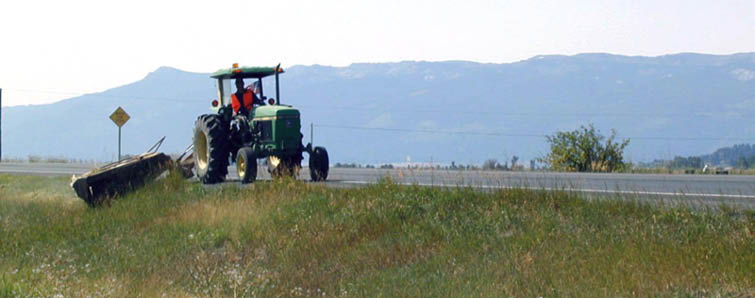
Figure 1-8 | Roadside mowing
Although mowing a clear zone directly adjacent to the pavement poses little harm to pollinators, frequent roadside mowing of the entire roadside can decrease the densities of pollinators.
Photo credit: Idaho Transportation Department
Roadsides play an important role in the conservation of declining wild pollinators and in supporting the health of managed pollinators. Throughout the revegetation process, practitioners and designers can enhance roadsides to benefit pollinators.
1.5.5 Goal-Oriented, Context-Sensitive, and Integrated
The overall approach in every aspect of this report is goal-oriented, context-sensitive, and integrated (Clark and others 2001). The goals of establishing and protecting native plant communities are considered along with transportation goals, including safety, efficiency, and cost-effectiveness for the life of the road. This is not an idealistic approach; while recognizing that resources are limited and conditions are degraded, the approach is technically and economically feasible while still enabling the integration of roads with ecological processes.
Sensitivity and appropriateness to the local context are essential parts of successful revegetation. This report is intended to facilitate the process of developing locally appropriate, context-sensitive prescriptions on a project-by-project basis, integrating top-down and ground-up information to meet the specific challenges at hand. For this reason, the report does not provide cookbook-type "recipes" or specific prescriptions. For example, no "one-size-fits-all" seed mix exists for roadside revegetation. The process and tools needed to arrive at context-sensitive solutions are not difficult to apply; by following the steps outlined in this report, practitioners will be able to generate the information they need.

